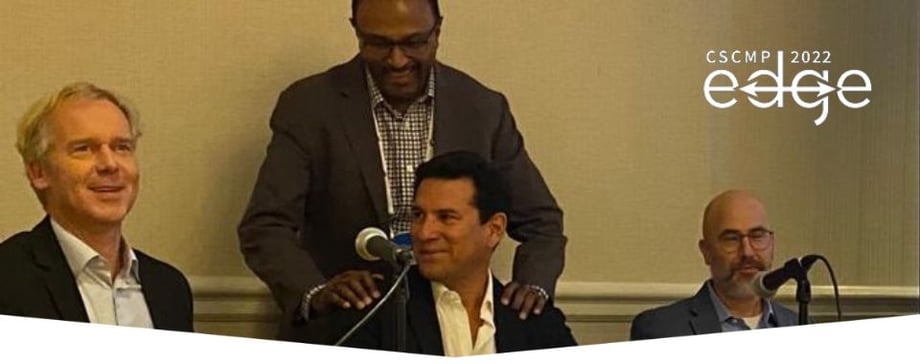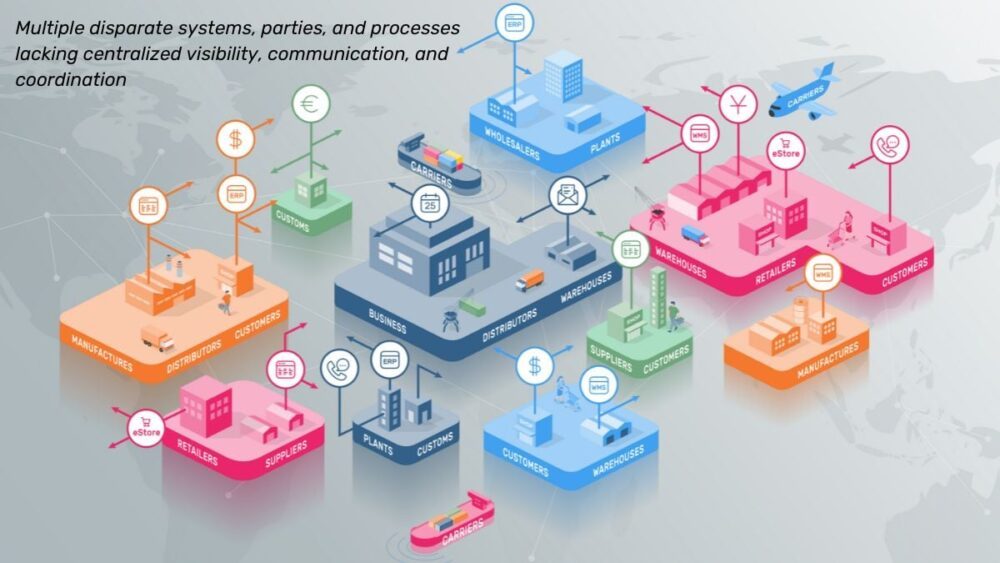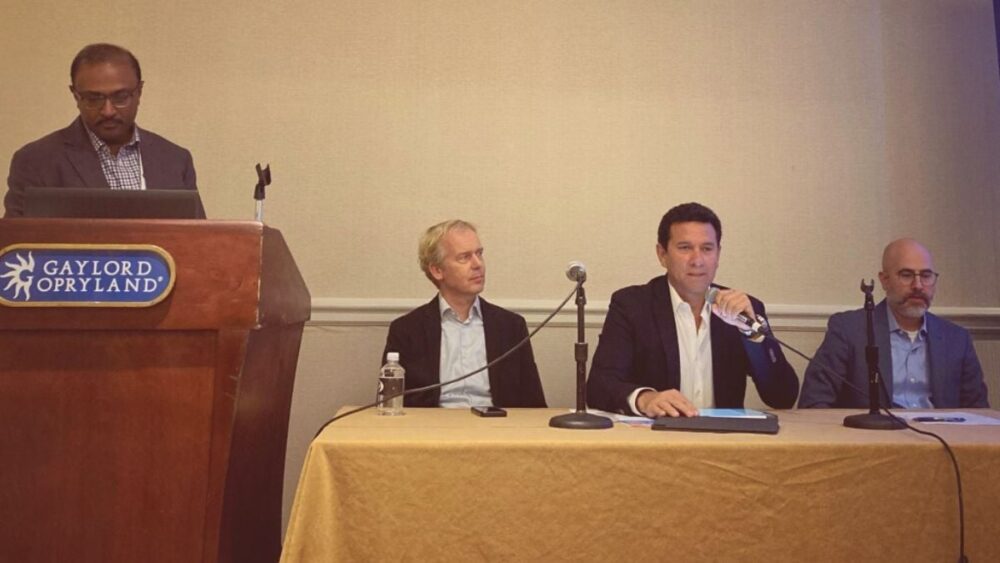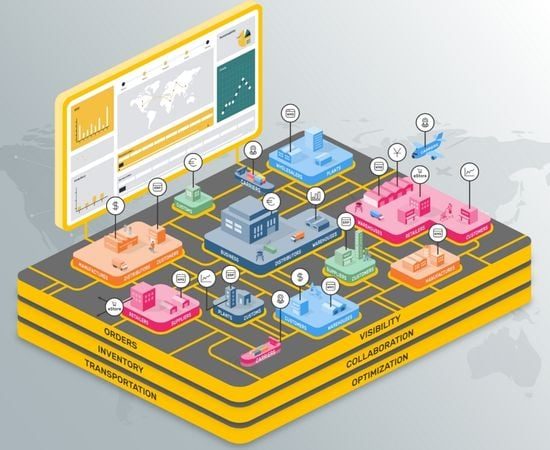
The last couple of years has taught us that change is constant. And, amid all the chaos – whether it’s spurred by disruption, inflation, business growth, new markets, new product lines, mergers and acquisitions, or evolving customer requirements – the supply chain is not a background actor but often at the heart of what drives failure or success.
For many businesses, supply chains are powered by a complex network of systems and processes – at the core of which are people. At CSCMP, we spoke with executives at various stages of digital transformation about the challenges of change management and meeting the rigorous demands of the ‘new normal.’

Dustin Serratt, Vice President of Procurement at Airgas, a large industrial gas and welding safety supplies company, shared that his organization has gone through several mergers and acquisitions over the years. Dustin explained that as a customer-centric organization going through M&As, you tend to develop your own kind of silos and business segments. From a technology standpoint, that means multiple ERPs act as the backbone and operating alongside supply chain execution, CRM and sales systems, and procurement and inventory management.
“These systems don’t talk to each other very well,” said Dustin, “ERP systems are designed to try to integrate all the ecosystem into a ‘one size fits all’ model, but that (formulation) doesn’t really fit our business’ DNA.” Airgas is also dealing with the complexity of multiple businesses when trying to unify how the supply chain is managed. They currently use a number of unique technology platforms, including homegrown and 3rd party systems, to support and maximize each of the industry verticals. “We’re leveraging operationally sound technology but it’s not best across all enterprises.” In other words, while each system and platform does well to support the specific vertical it was designed for, no one system or platform is right for operations as a whole; their ambition is to unify across these disparate systems.
“It’s a marathon, and we never stop. We’re always starting a new run to develop capabilities.”
Armando Robles, Vice President of One4pl, a global 4PL logistics service provider found himself in a similar position not too long ago. One4pl was servicing a variety of clients across multiple continents and multiple languages, who were looking to source from new regions and providers, as they shifted from China to Taiwan and Vietnam. Armando explained that they needed to develop immediate logistical ecosystems to establish the processes, controls, and capabilities required to quickly support shifting dynamic networks, high volumes and even higher service levels, while simultaneously reducing lead times and friction against rising costs. “It’s a marathon, and we never stop,” he quipped. “We’re always starting a new run to develop capabilities.”
To get a leg up on that marathon, Armando needed to synchronize the ecosystem of logistics services, providers, and capabilities, including warehouse, last mile delivery, shipment for ocean freight, air freight, and multi modal, across over 300 cities around the world. He had been looking for the best supply chain technology and recently chose a global supply chain Control Tower that would connect multiple customer systems and platforms for single-source information and multimodal, real-time tracking.
“Staying fast and nimble is critical in a world where lead times are always changing and customers need to be updated on scenarios in the short- and middle-term to evaluate impact and make strategic decisions,” said Armando. “For One4pl, that meant having a new level of transparency to allow them to make more and better decisions in less time. A single and multi-modal view into all global flows, into all KPIs and real-time events.”

MPO CEO and Co-founder, Martin Verwijmeren, added that he hears similar sentiments from the businesses and analysts he speaks with. “The world has become unpredictable and chaotic; it’s difficult to deal with having multiple siloed systems and departments internally as well as across supply chain sectors.” From what he’s seen, customer experience is vital to the success of any business, and customer wants and needs are increasing day by day. Providing all the options the market demands and going for faster delivery requires keeping an eye on operational excellence – but budgets are not unlimited. Organizations must be cost-conscious and consider efficiency while also maintaining high quality. “That’s why It’s particularly important to collaborate, orchestrate, and create workflows across teams, functions, and ecosystem partners,” said Martin.
As you work to build the right solution while remaining highly customer-focused, it’s a little bit like fixing the plane while flying it.
In the meantime, “if you don’t have the technology, your solution is workforce,” Dustin commented. As Airgas works to build the right solution while remaining highly customer-focused, he joked that “it’s a little bit like fixing the plane while flying it.”
Still, the digital transformation journey varies across organizations. For Armando, the focal point is exploring and executing a proof of concept. “Prove (the initiative) in a small environment and evaluate impact.” For Dustin at Airgas, it’s important to first have a vision for what the technology is supposed to accomplish and to consider the people who are going to own and operate that technology platform. “We have to think about our stakeholders and what’s in it for them,” which, as Dustin elaborates, means thinking beyond any one department to the business as a whole. “How can this technology platform help position the business to enable revenue? We need to build a financial business case for saying we have a vision for what ‘better’ might look like.” This requires stakeholder alignment and consensus – similar to what digital transformation expert Bryce Boothby suggested as businesses work to build trust, break down silos, and work in cross-functional teams to find the right solution.
Dustin also shared that finding a technology provider who truly understands your business challenges and engages in proper discovery to find the right solution is key. Otherwise, “you end up with something out of synch that needs all these customizations and doesn’t ever really fit right. It requires a lot of transparency between us and our partners.” In fact, Dustin shared that his biggest takeaway was to be more open to share with their partners. “We try to protect our information and our business model and be prudent about that, but at some point, you have to have very open and candid conversations to solve problems.”
“Technology is as much about people as it is about systems and processes.”
Martin agreed that the human component is a significant factor – technology is as much about people as it is about systems and processes. When organizations are going through an implementation, there are many ways to enable change management and get organizations on board with the new system. “Typically we see that the companies we serve have a vision, a mission, and a passion to change things,” said Martin. “They recognized that the chaos is not sustainable. Management often fears or resists change more than the people themselves, but exposure to new technology can also create excitement.” Martin explains that the best way to generate momentum, is to start right away with simple, small steps. “Don’t try to boil the ocean but define a reasonable, doable scope that can deliver results in three months. That way (the initiative) becomes visible, can be proven, and generates more enthusiasm across the company.”
Starting with templates can also be helpful. The notion of change can be a vague concept and businesses don’t necessarily know what a solution should look like. “MPO offers solution templates, or sample solutions, across inbound, outbound, e-commerce, and reverse flows, for instance, that use best practices, so new customers don’t have to reinvent the wheel,” explained Martin. “It helps accelerate the design stage to come to an initial solution sooner.”
 Martin also encourages businesses to “acknowledge that in the end you will have a heterogenous landscape. Those systems came into being to serve a certain purpose and they serve their function well. The only thing missing is the end-to-end perspective. That’s all the customer cares about; they have a demand and want it done as best as possible.” This is a comforting fact: That you can respect the landscape as it already is and simply add a unifying platform to better manage the order flow from an end-to-end perspective. “You can make big steps without ruining your current systems landscape or worry about the risks of migrating. Just add to the existing world and get it done quickly.”
Martin also encourages businesses to “acknowledge that in the end you will have a heterogenous landscape. Those systems came into being to serve a certain purpose and they serve their function well. The only thing missing is the end-to-end perspective. That’s all the customer cares about; they have a demand and want it done as best as possible.” This is a comforting fact: That you can respect the landscape as it already is and simply add a unifying platform to better manage the order flow from an end-to-end perspective. “You can make big steps without ruining your current systems landscape or worry about the risks of migrating. Just add to the existing world and get it done quickly.”
Martin also insists that businesses shouldn’t be concerned with getting it done right the first time, but to expect the unexpected. The future is unpredictable, so technology should be flexible and configurable to welcome uncertainty and allow organizations to play, test ideas, and evolve as needed. Armando shares in this view: “We for sure make a lot of mistakes, but we have the capability to learn from that.” Perhaps the greatest takeaway for those considering their own transformation is to embrace complexity and have the courage to play, to fail, and to learn.
Looking to get an end-to-end perspective on your heterogeneous systems landscape? MPO enables clients to unify people, systems, and processes on a single-view Multi Party Orchestration platform. Recently recognized as a Leader in the Nucleus Research Control Tower Value Matrix, you can download a copy of a case story below or connect with a member of our team to learn more about how MPO can help you drive efficiencies, cost savings, and higher service levels for your business. Reach out to info@mpo.com, sales@mpo.com, or request a demo today.
- Bitcoin
- blockchain
- blockchain compliance
- blockchain conference
- coinbase
- coingenius
- Consensus
- Control Tower
- crypto conference
- crypto mining
- cryptocurrency
- decentralized
- DeFi
- Digital Assets
- Digital Transformation
- ethereum
- machine learning
- MPO Blog
- non fungible token
- plato
- plato ai
- Plato Data Intelligence
- Platoblockchain
- PlatoData
- platogaming
- Polygon
- proof of stake
- Supply Chain Complexity
- Supply Chain Orchestration
- W3
- zephyrnet













